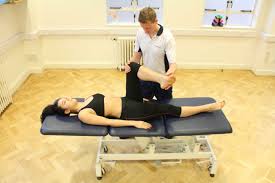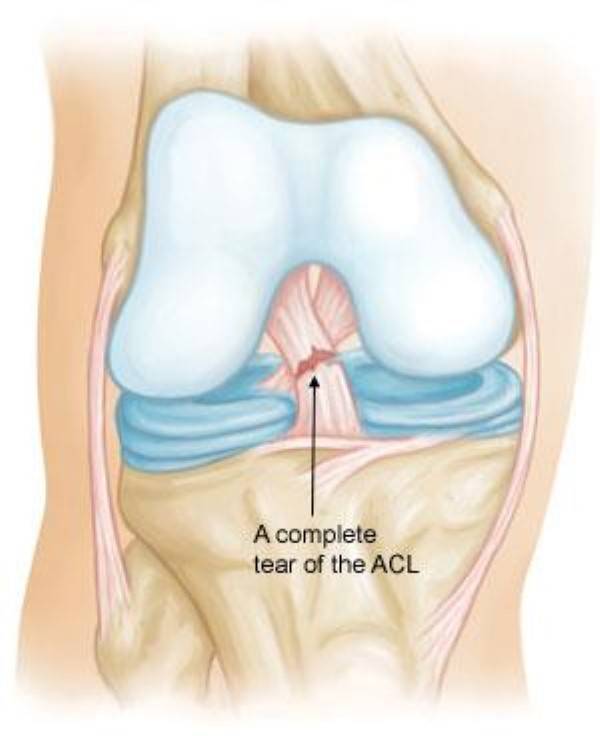If you have recently injured your anterior cruciate ligament, you may be wondering how to treat the injury. Rest assured, there are many treatment options available to you! In this blog post, we will discuss the different treatment methods and what is likely to work best for you. We will also provide some tips on how to speed up the healing process. So read on to learn more about how to treat an anterior cruciate ligament tear!
Contents
What Is an Anterior Cruciate Ligament Tear?

The anterior cruciate ligament is one of the major stabilizing ligaments in the knee. It connects the femur (thighbone) to the tibia (shinbone) and prevents the knee from hyperextending. A tear of the anterior cruciate ligament can occur when the knee is bent too far backward, twisted forcefully, or hit hard from the front.
Anterior cruciate ligament tears are fairly common, especially in athletes participating in sports that involve cutting or changing direction quickly, such as basketball, football, or soccer.
The symptoms of an anterior cruciate ligament tear can include pain, swelling, and instability in the knee. If you have an anterior cruciate ligament tear, it’s important to see a doctor right away.
How To Diagnose?
There are several ways that ACL tears can be diagnosed. The most common is through magnetic resonance imaging (MRI). An MRI uses powerful magnets and radio waves to create detailed images of the inside of your body.
Your doctor may also order a computed tomography (CT) scan or an X-ray to rule out other conditions, such as a fracture.
In some cases, your doctor may recommend arthroscopic surgery. During this procedure, a small camera is inserted into your joint through a small incision. This allows your doctor to directly visualize the inside of your joint and confirm the ACL tear.
How To Treat Anterior Cruciate Ligament Tear?

To Treat anterior cruciate ligament tear:
Rest
Rest the knee. Avoid activities that put stress on your knee, such as running or playing sports. For example, use a knee brace to help support your knee.
Ice
Apply ice to the injured area for 20 minutes at a time, several times a day. This will help decrease swelling and pain.
Compress
Compress the knee with an elastic bandage or wrap to help reduce swelling. For example, you can use an ace wrap.
Elevate
Elevate the knee above the level of your heart to help reduce swelling. For example, prop your leg up on a pillow when you’re sitting or lying down.
Rehabilitation
Physical therapy is an important part of rehabilitating from an ACL tear. A physical therapist can help you regain range of motion and strength in your knee. They can also help you improve your balance and coordination.
Bracing
Your doctor may recommend that you wear a knee brace to stabilize your knee joint. Different types of braces can be used depending on the severity of your injury.
Surgery
Recovery time from ACL surgery can be anywhere from 3-6 months. During this time, it is important to follow your physical therapist’s recommendations to ensure a successful recovery.
Alternative Treatments
Acupuncture
Although there is little scientific evidence to support the efficacy of acupuncture in treating ACL injuries, some anecdotal reports suggest that the technique may help relieve pain and promote healing.
Herbal Medicine
Chinese herbs are often used in conjunction with acupuncture for treating ACL tears. There is some scientific evidence to suggest that certain herbs may be effective in reducing inflammation and promoting healing.
Dietary Supplements
There is some evidence to suggest that certain dietary supplements, such as glucosamine and chondroitin, may help treat ACL injuries. However, more research is needed to confirm these findings.
Rehabilitation Exercises
Rehabilitation exercises are an important part of the treatment process for ACL injuries. These exercises can help to strengthen the muscles around the knee and improve the joint range of motion.
Surgery
In some cases, surgery may be necessary to repair an ACL tear. This is typically only done if other treatments have failed to relieve pain and improve function. For some people, surgery may be the best option to treat an ACL tear. Surgery can help to repair the ligament and restore function to the knee.
How Long Does It Take To Heal?
It is common for patients to want to know how long it will take for their anterior cruciate ligament (ACL) tear to heal. The answer, however, is not always simple. While some patients may experience a full recovery within 6-9 months, others may require more time or even surgery.
The healing process following an ACL tear is complex and depends on many factors, including the severity of the injury, age, activity level, and overall health. For example, a young, healthy athlete who tears their ACL will likely have a different healing process than an older sedentary individual.
In general, the first few weeks following an ACL tear are critical for healing. During this time, the knee joint will be immobilized in a cast or splint to allow the ligament to begin to heal. After 2-6 weeks, patients will typically begin physical therapy to regain range of motion and strength.
The final stage of healing usually occurs over several months as the ligament continues to strengthen. It is important to note that even after the ACL has healed, there is a risk of re-injury. For this reason, many patients will be advised to avoid high-impact activities or contact sports.
If you have recently suffered an ACL tear, it is important to follow your doctor’s instructions for treatment and rehabilitation. With time and patience, you should be able to make a full recovery.
Prevention Tips
various prevention tips can be followed to avoid an anterior cruciate ligament tear.
- Firstly, it is important to maintain good muscle balance around the knee joint. This means that the muscles on the front and back of the thigh should be of equal strength. Weakness in the hamstring muscles can lead to increased stress on the ACL, and thus, increase the risk of injury.
- Secondly, it is important to wear proper footwear when playing sports or engaging in any physical activity. Wearing shoes that provide good ankle and arch support can help to prevent ACL tears.
- Thirdly, it is important to warm up properly before any physical activity. A proper warm-up will help to increase blood flow to the muscles and joints, and will also help to reduce stiffness.
- Fourthly, it is important to avoid sudden changes in direction when playing sports or participating in any physical activity. Sudden changes in direction can put unnecessary stress on the ACL, and thus, increase the risk of injury.
- Lastly, it is important to avoid landing in a twisted position. When landing, the knee should be in line with the foot, and not turned inwards or outwards. Landing in a twisted position can put unnecessary stress on the ACL, and thus, increase the risk of injury.
By following these prevention tips, you can help to reduce your risk of suffering an anterior cruciate ligament tear.
Conclusion
It may be concluded that “how to treat anterior cruciate ligament tear” is still a matter of ongoing research, and that there is not yet a clear consensus on the best course of action. In general, however, it seems that surgery followed by rehabilitation is the most effective treatment option.
Further research is needed to establish a more definitive answer. In the meantime, patients should discuss all available treatment options with their doctor to make the best decision for their case.
Physical Therapy help patients recover from pain. If you’re experiencing Back pain, Shoulder pain, Knee pain, Neck pain, Elbow pain, Hip pain, or Arthritis pain, a physical therapist at MantraCare can help: Book a physiotherapy session.


